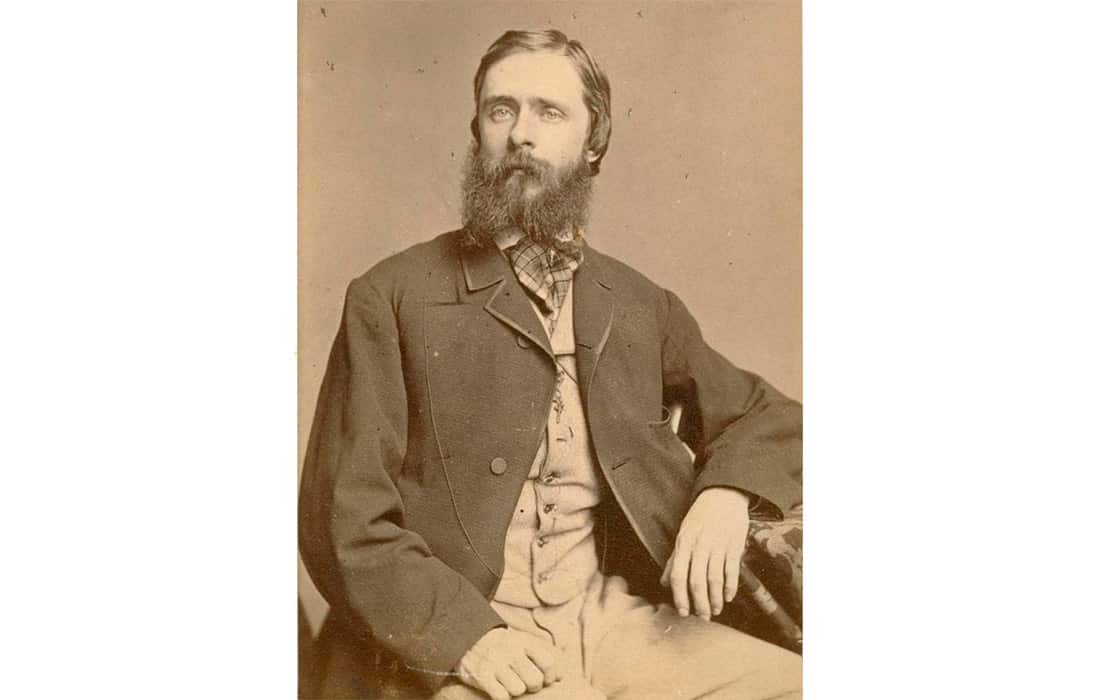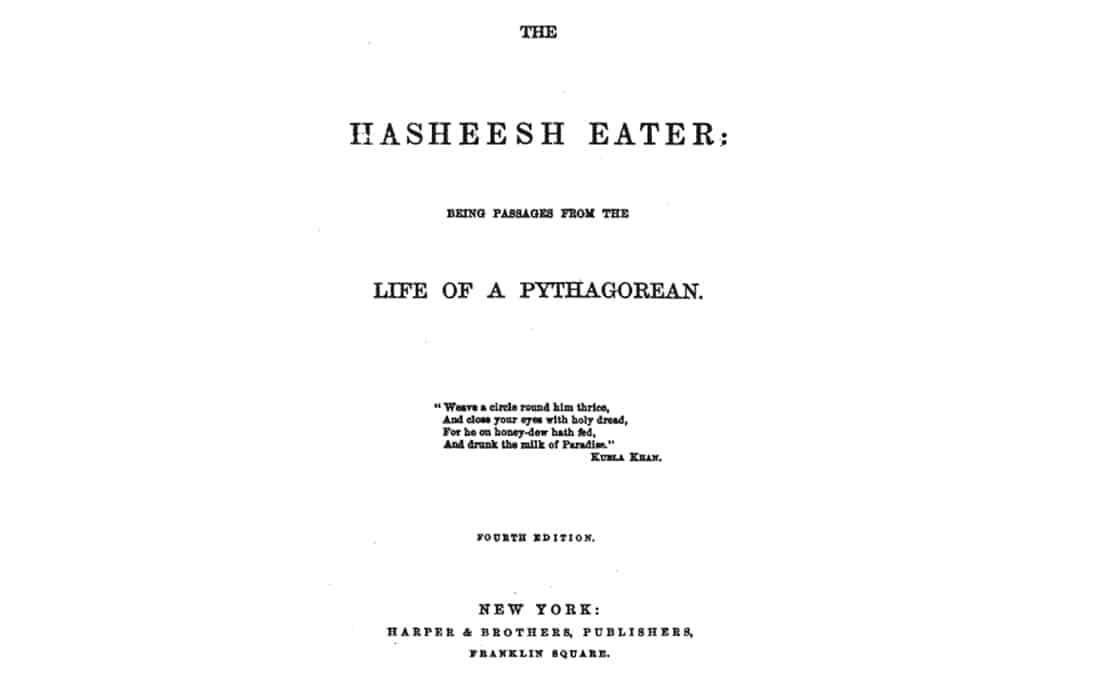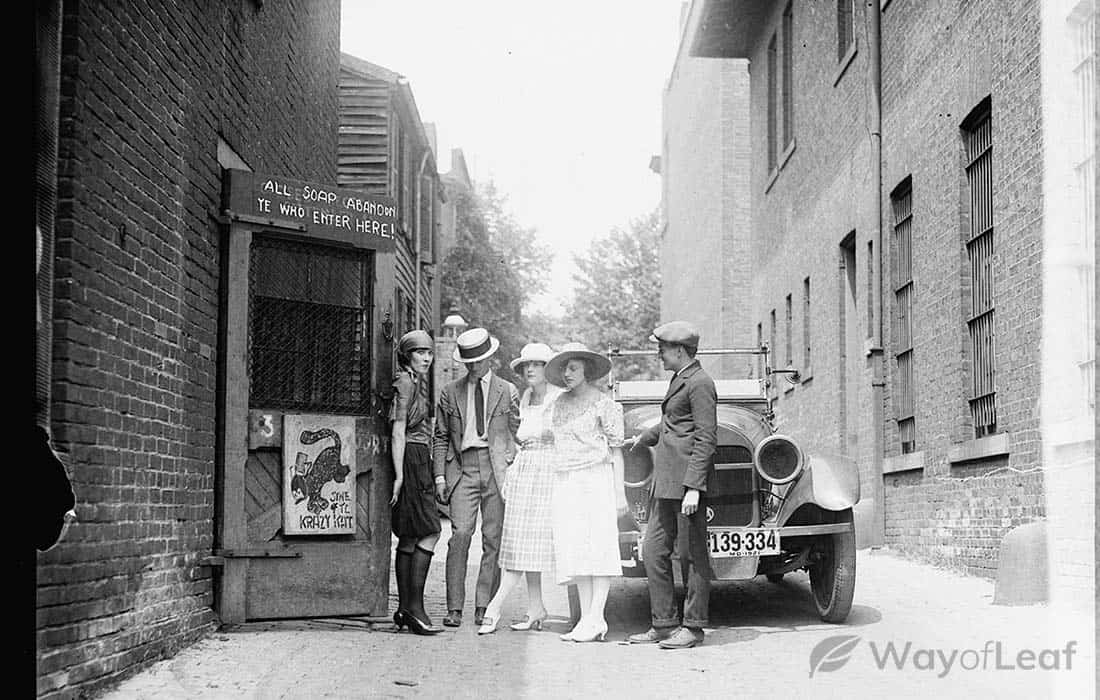We know now that marijuana has been used in one form or another by humans for at least 12,000 years. There is also evidence that humankind has used cannabis to get high for at least 4,000 years and the plant only became illegal in many places around the world in the early 20th century.
There are hundreds of slang terms relating to weed, with “stoner” among the most famous. Despite the plant’s long and illustrious history, the above term only became popularized within the last 100 years or so. It has been known as a derogatory word during its brief history. However, there are signs of reduced public belief in the negative stereotypes associated with the term.
This is also down to a growing number of successful stoners, with many of the great innovators of today known to enjoy a joint or two.
Some people believe the term originates in the 1930s, while others suggest it only came into being a couple of decades later. By the 1970s, “stoner” was used as a noun to imply that the individual in question had been high in the past and would do so again due to a dependence on weed. However, it seems likely that while the stoner term is modern, the history of people acting like stoners isn’t.
This article provides a timeline of the stoner lifestyle, beginning with its potential origins.

The Scythians Got Stoned
This is, perhaps, a significant reach, but in the fifth century BC, the Greek historian, Herodotus, wrote about the Scythians, a Central Eurasian nomadic tribe, who enjoyed getting high.
According to Herodotus, these warriors created a framework of tree sticks and stretched pieces of cloth on top. Next, they placed a dish inside with hot stones on it. Then they got hemp seed, crept into the tent, and threw the seed on the hot stones. This process resulted in a vapor that the Scythians inhaled. Herodotus wrote that the warriors enjoyed the experience so much that they howled with pleasure!

One could argue that this is one of the first written records of people getting stoned. After all, the Scythians literally used hot stones and cannabis to get high! Furthermore, it seems as if they were regular users, albeit not before a battle.
The term stoner generally has a negative connotation. It suggests that the marijuana user is lazy and incapable of performing tasks to a high level. Those on the receiving end of a Scythian invasion would care to disagree!
Therefore, it is probable that the phrase doesn’t come from the Scythian’s usage of weed, though it is a nice story!
The Term “High” Relating to Being Intoxicated Is First Attested
These days, we understand that being high relates to intoxication with a substance such as marijuana, LSD, or magic mushrooms. Indeed, one can be a stoner if habitually high on other substances apart from weed.
However, the word “high” itself comes from ancient languages such as Danish, Norse, and Old Saxon. In the 13th century, it was used to describe things that were momentous, tall, lofty, elevated, etc. This included courts, crimes, and important roadways, or the “high road,” in other words.

This Rök runestone in Östergötland, Sweden, is the longest surviving source of early Old East Norse
The Online Etymology Dictionary suggests that the word “high,” relating to feeling euphoric or exhilarated after alcohol consumption, was first used in the 1620s.
There is also a suggestion that witches in the 17th century used drugs and got so intoxicated they believed they were flying and admitted flying on broomsticks. These individuals thought they were high in the sky after their drug use. This is almost certainly nonsense, though it sounds hilarious.
The Italian Connection
There’s also a claim that the word stoned comes from the Italian stonato, which means “out of tune.” However, there’s a suggestion it can mean “bewildered, confused, or dazed” when discussing someone’s state of mind.

Indeed, there is quite a link between the Italian language and English words for drugs and the act of being intoxicated! Italian drug slang words such as stecca and linea were coined after stick relating to marijuana cigarettes and line relating to cocaine.
Furthermore, in Italian, there is collassato, which means “collapsed,” and distrutto, meaning “destroyed,” both terms relate to the destructive effects of drugs.
Literary Stoners
The Club des Hashischins, or “Club of the Hashish Eaters,” was a group of intellectual elites based in Paris who met to chronicle their drug-induced experiences. Its members included Alexandre Dumas, Victor Hugo, Honoré de Balzac, Dr. Jacques-Joseph Moreau, and Charles Baudelaire.
It is probable that many of the great works created by the above names were heavily influenced by marijuana usage. Chief among them is Dumas’ Count of Monte Cristo, which contains many references to hashish in its unabridged version.
In many ways, the first famous American stoner lived over a century before the term was brought into the English language. Fitz Hugh Ludlow was a New York writer known for publishing articles about his experiences with weed. His book, The Hasheesh Eater, was first published in 1857. Ludlow consumed large doses of cannabis extract regularly throughout his college years.


He wrote that with hasheesh, “The whole East, from Greece to furthest China, lay within the compass of a township; no outlay was necessary for the journey.” Ludlow referred to hasheesh as the “drug of travel,” meaning that when high on it, he could travel anywhere in the world in his mind.
New Words for Intoxication
Another suggestion is that slang terms for intoxication generally came from words meaning to affect or damage something badly, including “blitzed,” “smashed,” and “trashed.”

Cooking terms are also used to describe being high, such as “fried,” “baked,” and “boiled.” The authors of the American Heritage Dictionary claim these terms were coined by Princeton University in the 1920s.
The Beat Generation Begins
The famous author, Jack Kerouac, is credited with creating the phrase “Beat Generation” in 1948. He used the term to describe the anti-conformist youth movement gaining traction in New York. The term “beat” is derived from underground slang, including the drug addicts, dealers, and thieves that inspired the likes of Kerouac and Allen Ginsberg.

Jack Kerouac photographed by Tom Palumbo circa 1956
In 1958, Herb Caen used “beatnik” in an article he wrote for the San Francisco Chronicle. However, the term was probably used a few years before then, possibly coming from Sputnik, the first artificial Earth satellite, which translates to “fellow traveler.”
The Beat Generation was associated with marijuana, with a suggestion that they spread the usage of weed across American campuses.
Certainly, writers like Kerouac and William Burroughs relied on weed and many other drugs for inspiration during the 1950s. However, the 1960s is arguably the first decade routinely associated with cannabis. It was an era of vast social change, but the stereotypes associated with stoners at this time have persisted ever since.
The Birth of TV Stoners
Although Cheech and Chong popularized the stoner lifestyle in the 70s, The Maynard G. Krebs character from The Many Loves of Dobie Gillis, a sitcom that ran from 1959 to 1963, was arguably the first TV stoner.
Krebs was depicted as a beatnik who hated authority, shirked responsibility, and loathed employment. While there was never any suggestion that the Krebs character used drugs, he was associated with unusual behavior and being out of touch with reality. The caricature of a work-shy bum has unfortunately retained its association with weed to the present day.

Cheech Marin and Tommy Chong took things to the next level with albums, movies, and other side projects featuring the duo, seemingly perpetually high on marijuana. The unexpected popularity of their debut movie, Up in Smoke, in 1978 led to several sequels. However, the Cheech and Chong movies only hammered home the stereotypes, and it was a hard life for people who liked marijuana.
Greed Is Good, Marijuana Is Bad
The stoner lifestyle was the polar opposite of the Greed is Good era that gobbled up the United States, and most Westernized nations, in the 1980s. It was all about Wall Street, Filofaxes, sharp suits, business, and a ton of cocaine.

It was also a bad time to be a stoner because American prisons filled up with non-violent offenders during President Reagan’s tenure. A joint was considered as bad as a line of cocaine, and stoners were still seen as societal parasites.
Marijuana’s popularity was arguably at an all-time low by the end of the 1980s. The famous Bill and Ted characters are clearly stoners, yet the movie doesn’t depict them as such. Perhaps the makers were too frightened to associate the two dopey pals with weed in what was meant to be a mainstream comedy.
A Revival
The 1990s saw a resurgence in the use of marijuana, as musicians such as Dr. Dre and Snoop Dogg readily associated themselves with the drug. Suddenly, there was a slight recognition amongst the public that stoners could become successful in life. Movies that popularized weed include Dazed and Confused, Fear and Loathing in Las Vegas, and The Big Lebowski.

Oddly enough, it is the latter film that helped shift public opinion. While the main characters were slackers, several other people used marijuana for creative purposes and medicine in the movie. In 1996, California legalized medical marijuana as the stoner lifestyle finally made steps towards infiltrating the mainstream.
Acceptance Without Legality
The 21st century has seen a seismic shift in the perception of the stoner lifestyle. No longer is weed overwhelmingly associated with jobless fools. Today, marijuana is used by millions of Americans for various reasons. There are physicians, chemists, financial advisors, stay-at-home moms, and even American Presidents who use cannabis or have admitted to doing so in the past.
Suddenly, the public sees that stoners can be everyday people. Your next-door neighbor could be a stoner, as could your work colleagues, boss, or siblings. Being a stoner no longer means getting high, staying on the sofa for hours, eating pizza, and doing your best not to work or shower.

In the modern era, people use marijuana regularly for many reasons. Maybe they have a debilitating medical condition or are deeply stressed out because they work long hours. For others, cannabis is a suitable replacement for alcohol.
All of these people have careers, aspirations, and normal personal hygiene! The tech industry is a hive of activity and innovation. Guess what? These guys smoke marijuana like a 1960s hippie!
Cannabis is more abundant and potent than ever before and is also becoming legal in more states as the years pass by. As a result, there is no sneaking around at night trying to buy Mexican brick weed from a shady dealer. Instead, you can smoke a joint, take hits from a bong, or use a vaporizer to get high at home with no fear of arrest.
There is a school of thought that the term stoner should be eliminated from the lexicon entirely. Why? Because it still brings up visions of unemployed hippies rather than the reality: highly successful people use weed too. The sooner marijuana stops being associated with the negativity of the past, the sooner it can become entirely legal.




![How to Clean Your Bong [The BEST Guide]](https://wayofleaf.co/wp-content/uploads/2019/06/wol_1920x450-4-640x225.jpg)
![What Is a Triple-Barrel Joint? [Explained for the Rookie]](https://wayofleaf.co/wp-content/uploads/2019/06/wol_what-is-a-triple-barrel-joint-640x225.jpg)

![How Long Do Disposable Vape Pens Last? [The TRUTH Revealed]](https://wayofleaf.co/wp-content/uploads/2019/05/wol-banner-disposable-vape-pens-640x225.jpg)




